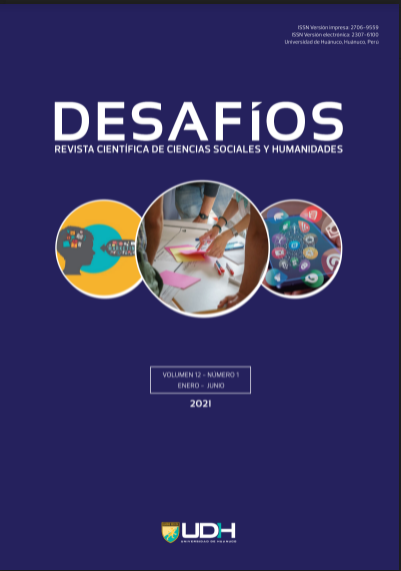Evaluación de procedimientos empleados para determinar la población y muestra en trabajos de investigación de posgrado
DOI:
https://doi.org/10.37711/desafios.2021.12.1.253Palabras clave:
cuantitativo, cualitativo, inclusión, exclusión, marco muestralResumen
Objetivo. Evaluar los procedimientos empleados para determinar la población y la muestra en trabajos de investigación realizados para optar el grado de maestría en la Universidad César Vallejo, sede Huancayo. Métodos. La investigación fue de tipo básico, nivel descriptivo y diseño descriptivo simple. La muestra estuvo conformada por 202 trabajos de investigación con enfoque cuantitativo que fueron analizados con la ficha de evaluación de criterios de población y muestra diseñada para el estudio. Resultados. El 100 % de los trabajos utilizaron muestreo no probabilístico, no presentaron población teórica, no consideraron criterios de inclusión y exclusión y determinaron el tamaño de la muestra de manera inadecuada. El 97,5 % de los trabajos con variables cuantitativas no precisaron el tipo y técnica de muestreo y el 42,5 % de los trabajos de variable cualitativa lo hicieron de manera inadecuada. Conclusión. Los procedimientos empleados para determinar la población y muestra en la unidad de análisis fueron inadecuados, mostrando debilidad en la aplicación de la teoría de muestras.
Descargas
Publicado
Número
Sección
Licencia
Derechos de autor 2021 Luis Florencio Mucha-Hospinal, Rafael Chamorro-Mejía, Máximo Edgar Oseda-Lazo, Rubén Darío Alania-Contreras

Esta obra está bajo una licencia internacional Creative Commons Atribución 4.0.
a. Los autores conservan los derechos de propiedad intelectual (copyright) de las obras publicadas, cediendole a la revista el derecho de primera publicación.
b. Los autores retienen sus derechos de marca y patente, y también sobre cualquier proceso o procedimiento descrito en el artículo.
c. Los autores retienen el derecho de compartir, copiar, distribuir, ejecutar y comunicar públicamente el artículo publicado en la RD (por ejemplo, colocarlo en un repositorio institucional o publicarlo en un libro), con un reconocimiento de su publicación inicial en la RD.
d. Los autores retienen el derecho a hacer una posterior publicación de su trabajo, de utilizar el artículo o cualquier parte de aquel (por ejemplo: una compilación de sus trabajos, notas para conferencias, tesis, o para un libro), siempre que indiquen la fuente de publicación (autores del trabajo, revista, volumen, número y fecha).















